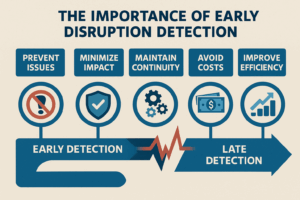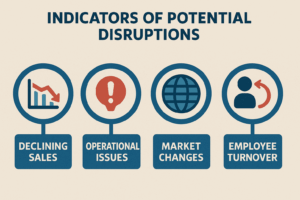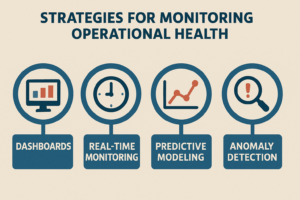Early Detection: Safeguarding Operations and Customer Experience
- Phone: +1(833)PHX-Geek
- 712 H St NE Suite 1904 Washington, D.C. 20002
Take a look at our camera system. Get remote access to your cameras, and monitor your restaurant while you are away. Great protection for you from theft, employee grift and wrongful lawsuits.
Introduction
In a fast-paced business landscape, the ability to identify potential disruptions before they escalate is crucial. Early detection allows companies to proactively manage risks, ensuring that both operations and customer experiences remain uninterrupted. Failure to recognize warning signs can lead to significant setbacks, impacting revenue and customer loyalty. By fostering a culture of vigilance and responsiveness, businesses can safeguard their interests and maintain their competitive edge.
Early detection is not merely a reactive measure; it is a strategic approach that empowers organizations to adapt to changing circumstances. By understanding the factors that lead to disruptions, companies can implement tailored monitoring systems that enhance operational resilience. This foresight enables businesses to allocate resources efficiently and streamline processes, thus mitigating the impacts of unforeseen challenges.
Moreover, the importance of early detection extends beyond internal operations. It also affects customer experience. When disruptions are managed swiftly, customers experience minimal interruptions, fostering trust and satisfaction. In today's consumer-centric market, maintaining a seamless experience is paramount, making early detection a vital component of business strategy.
Identifying potential disruptions hinges on recognizing key indicators that may signal future challenges. These indicators can range from internal factors—like employee turnover or production delays—to external influences such as market fluctuations or supply chain vulnerabilities. By systematically monitoring these signs, businesses can become adept at anticipating disruptions before they manifest.
For instance, data analytics can play a pivotal role in tracking operational metrics. By analyzing patterns in performance data, organizations can pinpoint anomalies that may indicate brewing issues. Regularly reviewing these metrics allows for timely interventions and can facilitate strategic adjustments to ensure smooth operations.
 Additionally, fostering open communication channels within teams can help surface concerns that may not be captured through data alone. Employees on the front lines often have insights into potential disruptions that may escape higher management. Cultivating a culture where feedback is encouraged can enhance a company's ability to detect and address issues early.
Additionally, fostering open communication channels within teams can help surface concerns that may not be captured through data alone. Employees on the front lines often have insights into potential disruptions that may escape higher management. Cultivating a culture where feedback is encouraged can enhance a company's ability to detect and address issues early.
Effective monitoring of operational health requires a comprehensive approach that integrates technology and human insight. Implementing robust systems for real-time data collection and analysis enables organizations to track key performance indicators (KPIs) continuously. This allows for the identification of trends and deviations that may signal impending disruptions.
Utilizing advanced analytics tools can improve the accuracy and speed of monitoring processes. For example, machine learning algorithms can identify patterns in data that may not be immediately visible to the human eye. By employing these sophisticated technologies, companies can enhance their predictive capabilities and initiate proactive measures to address potential disruptions.
Moreover, regular training and upskilling of staff in data interpretation and monitoring tools are essential for maximizing the effectiveness of these strategies. Employees who are well-versed in operational metrics can contribute to a more agile response to potential risks, ensuring that the organization remains resilient in the face of challenges.
Conclusion
Adapting to changing circumstances is a critical component of maintaining seamless operations and customer experiences. Businesses must remain flexible and responsive to new information and shifting market dynamics. By leveraging insights gained from early detection efforts, organizations can develop contingency plans that allow them to navigate disruptions smoothly.
 Successful adaptation also involves regularly revisiting and revising operational strategies. Continuous improvement should be a core principle, with businesses actively seeking feedback and data to inform their practices. This commitment to adaptability ensures that companies are not only reactive but proactive in their approach to operational management.
Successful adaptation also involves regularly revisiting and revising operational strategies. Continuous improvement should be a core principle, with businesses actively seeking feedback and data to inform their practices. This commitment to adaptability ensures that companies are not only reactive but proactive in their approach to operational management.
Ultimately, the ability to detect potential disruptions early and adapt accordingly is essential for long-term success. By prioritizing this capability, organizations can safeguard their operations while delivering exceptional customer experiences, thereby driving both growth and sustainability.